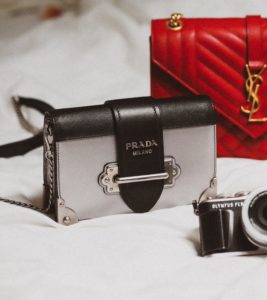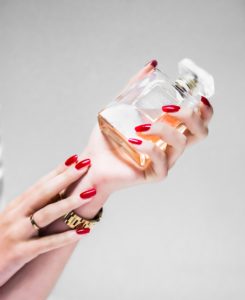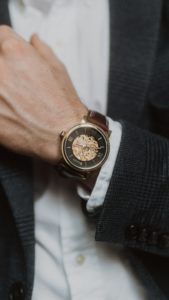Luxury Trends in the Middle East in 2022 and Beyond.
Throughout the 20th century, notable global luxury brands, especially those from Europe, had a presence in the Middle East. However, major market expansion didn’t begin until the 1990s, when mono brands set up many more shops in the region mostly through franchise arrangements. Since the turn of the millennium, the market has been growing at an annual rate of about 10%. Indeed, in 2022, the Middle East and China rival the traditional luxury markets of Europe, North America, and Japan.
The Middle East market, in particular, has become lucrative for global luxury brands due to emerging trends combined with its age-old customs.
The Nature of the Middle East Luxury Market
It is important to point out that the middle east is not a homogeneous market. It is a region with 18 countries and a population of slightly over half a billion. Residents speak diverse languages, including Arabic, Turkish, Persian, Hebrew, and Kurdish.
Contrary to an outsider’s first impression, the Middle East is a cultural melting pot. In addition to general trends that might be observed, unique factors shape the demand and supply of luxury goods in specific countries, cities, and local communities.
For example, the United Arab Emirates (UAE) is one of the most globalized nation in the region. Dubai, its capital city, is in world’s top five most visited cities. It hosts close to 20 million visitors annually, with over 80% being foreigners. The clientele of the luxury brands in the country is a mix of sophisticated locals and discerning tourists and travelers.
According to a report by Mordor Intelligence, a market research company, the most purchased luxury products in the Middle East include clothing and apparel, footwear, bags, perfume, jewelry, and watches and of course, luxury vehicles.
Given their broad base appeal, the most common brands purchased in terms of volume are Prada, Burberry, L’Oreal, and Shiseido.
Key Drivers of the Middle East Luxury Market in 2022
The Middle East market is an attractive market for luxury brands because of several factors, including the following:
High Disposable Income
The Middle East is a major producer fossil fuels. Five countries from the region are in the top ten oil producers and with it comes a a significant amount of foreign exchange, and trade flowing into the region.
Besides funding infrastructure development, the revenue provides free social services. Part of it flows through private enterprises and into the pockets of the citizenry.
Also, oil production revenue and national sovereign wealth funds result in citizens in the region paying relatively low taxes. For example, Saudi Arabia, United Arab Emirates, Qatar, and Bahrain do not impose individual income taxes and citizens in these countries receive income stipends from their respective governments.
The recent increase in petroleum prices equates to an increase in disposable income relative to the rest of the world. Recent market research indicates that while about 53% of consumers in Europe, North America, and Japan reported an increase in their expenditure on luxury goods, the number was 70% in the Middle East.
The trend is likely to continue especially with the growing demand for oil. The Organization of the Petroleum Exporting Countries (OPEC) has predicted that the global demand for oil will reach its peak in 2030.
Constant Flow of Tourists
Most governments in the Middle East have invested in establishing tourist attraction sites. That is how, for example, Dubai can receive close to 20 million tourists annually, putting it in the top five most visited cities globally.
Religious pilgrims significantly drive up the number of visitors to holy sites in the region, particularly Mecca. Visitors from other regions also come to the region for leisure and business. Many have high disposable income and easily shop for luxury goods in the local stores.
Magnificence as a Tradition
Even before luxury brands identified the Middle East region as a viable market, there existed a culture for thousands of years that celebrated opulence and with historical precedence. Mansa Musa, King of the West African Mali Empire and a man considered the wealthiest in history single handedly caused in inflation in Alexandria, Egypt and Cairo through his generous gifts of gold to the local populous. His benevolence was during his pilgrimage to Mecca. This happened over 700 years ago.
In that era, gold jewelry, fine robes, silver utensils, and exotic animals demonstrated extravagance. In 2022, the people in the region express their opulence through luxury vehicles, equestrian activities and exotic watches, cars, and residences.
Youth Culture
About 50% of the population in the Middle East is under the age of 25, and about 35% is under the age of 18. A report by Deloitte has indicated that the young people in the region have higher disposable incomes than the global average.
Luxury brands welcome this fortuitous fact: The youth are more likely to buy luxury items than their parents. According to research by Klarna, a Swedish payment processing firm, Gen Z at 33% and Millennials at 39% have the highest percentages of buyers of luxury goods among all generations.
Family Knows Best
Middle Eastern society is still grounded in intricate and extended family ties. This makes word of mouth a powerful marketing channel. Indeed, family and friends have a huge influence over the individual.
This is an opportunity for luxury brands as they can easily be promoted within families with little effort besides providing quality and the best customer experience.




How Middle East Luxury is Evolving into the Future
Like in other parts of the world, the luxury goods market is changing in the Middle East. In the short term, the changes likely to be witnessed include continued growth in the purchasing power of households.
And the growth of the purchasing category of the population, as the younger population moves to their 30s and 40s , expect this trend to spillover into larger luxury purchases and brands are keen to accommodate this.
A Shift towards Digital Distribution Channels
The United Arab Emirates (UAE), in particular, has become one of the markets with the highest percentage of consumers who buy luxury goods online. The digitization initially came as a nudge from the COVID pandemic. Some of the brands that have stepped up their digital campaigns in UAE include Prada, and Richemont Group, which the research firm Mordo Intelligence reports that it grew sales by 8% as a result.
Localization of Brands
There is a move towards more localization, customization and personalization of products and the supply chains. For example, in 2021, Prada SPA unveiled a capsule collection dedicated to observing Ramadan and celebrating Eid al-Fitr. In May 2020, CHANEL introduced a New Le Lion fragrance in the Middle East seven months before launching in the global market.
Adoption of AI and Other Technologies
There is growing adoption of AI technologies in the region such as augmented reality (AR) to help shoppers make better decisions on digital platforms. For example, using AR, Gucci has tested the possibility of trying shoes virtually in the UAE.
Addition of New Product Categories
Another trend that will become more apparent with time is the adoption of new categories of luxury products. For example, Aurae Lifestyle, a payment processing service provider, is releasing into the market customized payment cards.
The cards are symbols of status through the gold metal material they are made from and their designs. Besides facilitating holders to spend their money conveniently in stores, the processor provides concierge and lifestyle services.
In the foreseeable future, the Middle East will likely continue being a growing luxury market that embraces new technologies and ways of doing things.



